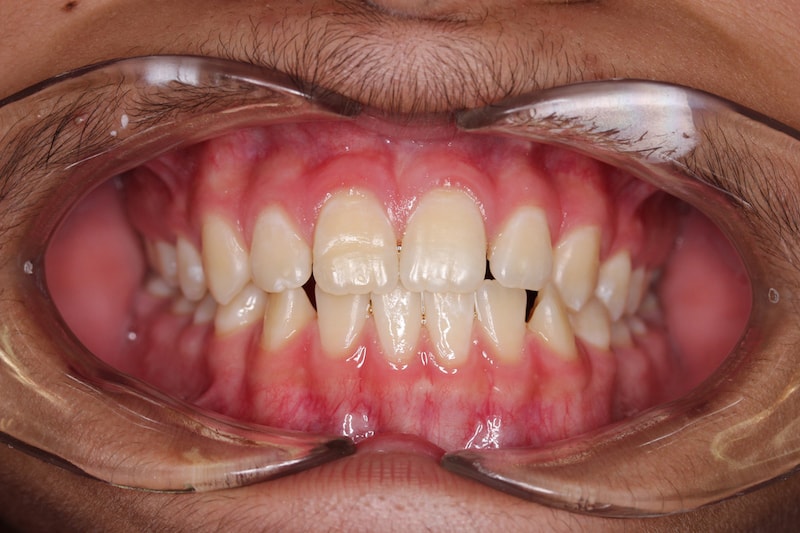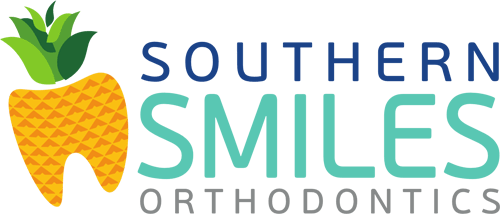Ideal Bite
This photo shows an ideal bite relationship and should be used as a comparison for images of common orthodontic problems. Upper front teeth are properly positioned ahead of lower front teeth. There is ideal overlap of upper and lower front teeth. The upper front teeth do not excessively cover the lower front teeth nor is there excess space present between the upper front teeth and lower front teeth. The bite relationship of the back teeth is ideal. The points of the upper teeth fit into the grooves of the lower teeth.
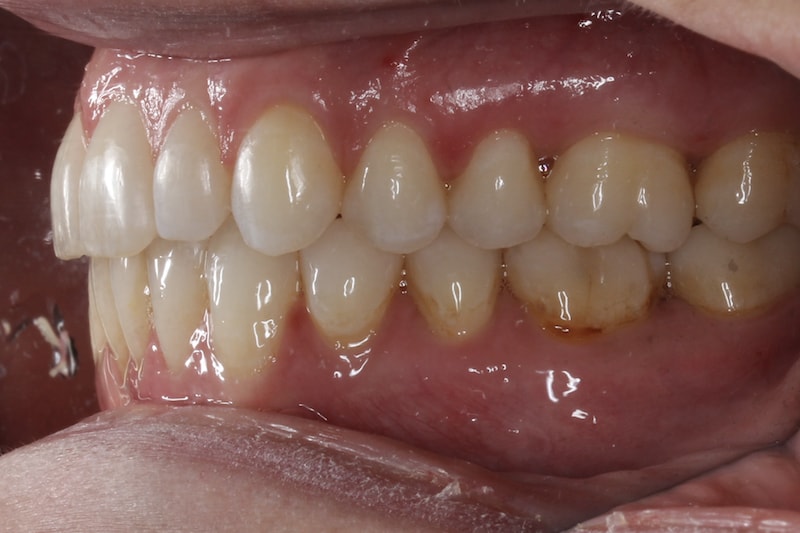
Anterior Crossbite
Some of this patient’s upper front teeth are behind his lower front teeth. Normally the upper front teeth are ahead of the lower front teeth. This type of problem can often be corrected with braces or Invisalign (removable, clear, plastic trays).
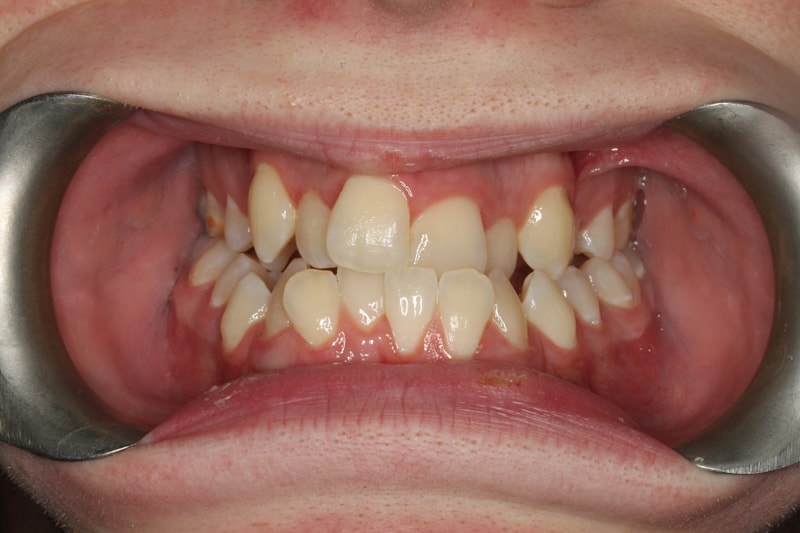
Posterior Crossbite
The lower back teeth are on the outside of the upper back teeth. This is often due to having a narrow upper jaw. Normally, the upper back teeth are on the outside of the lower back teeth. In a young child or adolescent this problem can be easily corrected by expanding the width of the upper jaw with a special appliance. This problem is more difficult to correct in adults whose upper jaw is done growing.
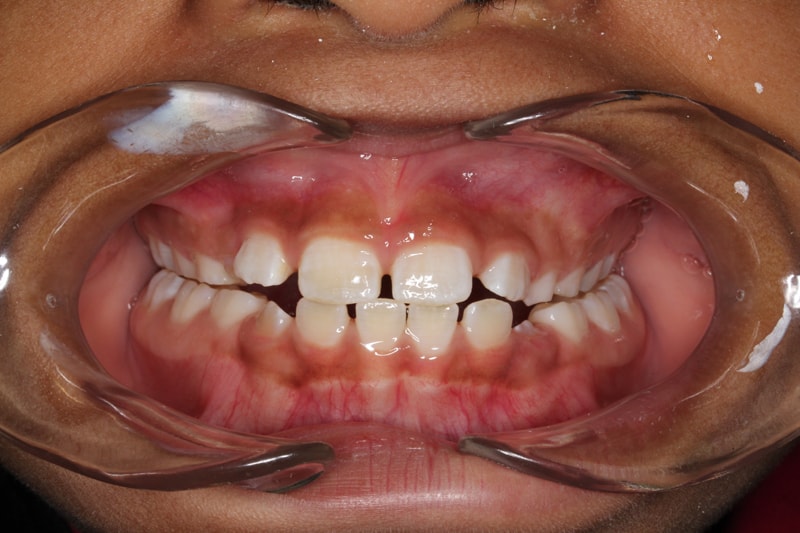
Complete Crossbite
This patient’s lower teeth are totally on the outside of his upper teeth. People commonly describe this problem as an “underbite.” This issue is often the consequence of excessive lower jaw growth or sometimes inadequate upper jaw growth. This patient’s crossbite is severe and will require orthognathic surgery (jaw surgery) to correct.
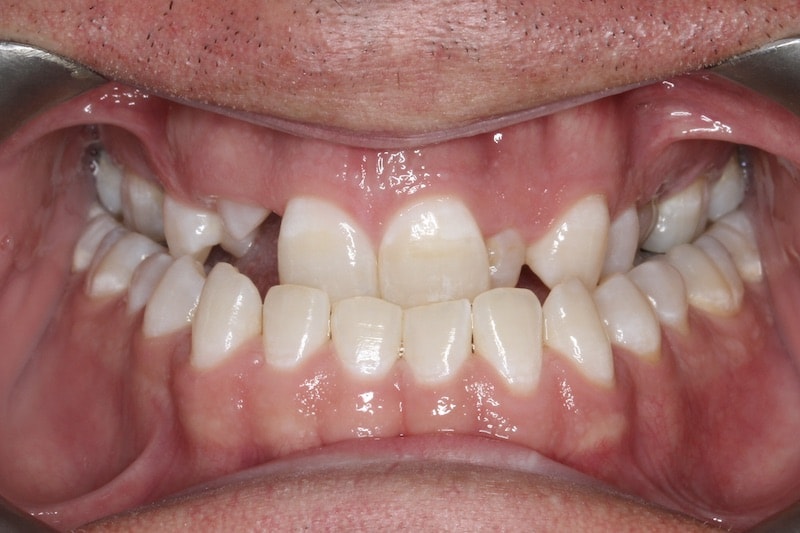
Deep Bite
The upper front teeth completely overlap the lower front teeth. This is a severe case. Normally the upper front teeth only overlap the lower front teeth by 1 to 2 millimeters. Braces can be used to improve the bite relationship.
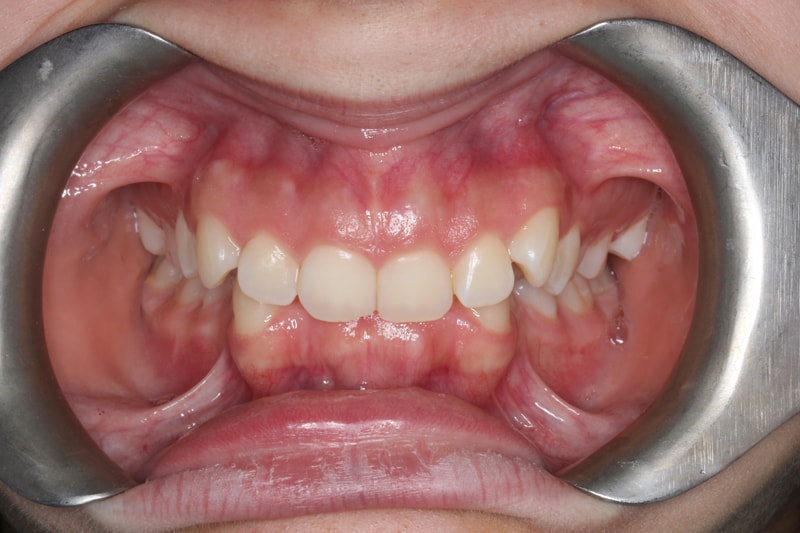
Open Bite
Amongst other orthodontic issues, there is excess space between the upper front teeth and the lower front teeth. Normally the upper front teeth only overlap the lower front teeth by 1 to 2 millimeters. Braces or Invisalign (removable, clear, plastic trays) can be used to improve the bite.
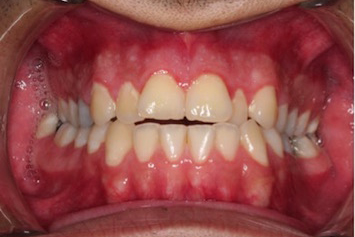
Excess Overjet
This patient’s upper front teeth are too far ahead of his lower teeth. Normally the lower front teeth touch the back surfaces of the upper front teeth. This is an extreme example of excess overjet requiring orthognathic surgery (jaw surgery) for correction. Patients can have more mild cases of excess overjet that can be treated with braces and additional appliances such as head gear, elastics (rubber bands), or springs.
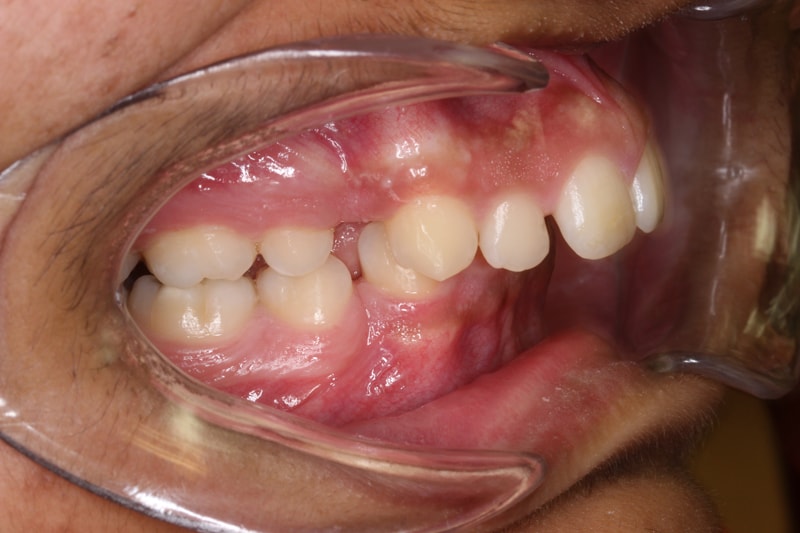
Minor Alignment Issues
This patient has minor tooth alignment issues which could easily be corrected with traditional braces or Invisalign (removable, clear, plastic trays).
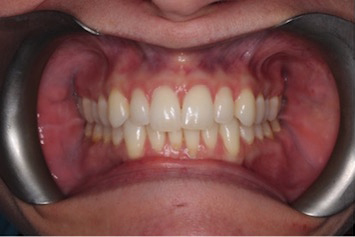
Moderate Alignment Issues
This patient has moderate tooth alignment issues and crowding which could be corrected with traditional braces or Invisalign (removable, clear, plastic trays).
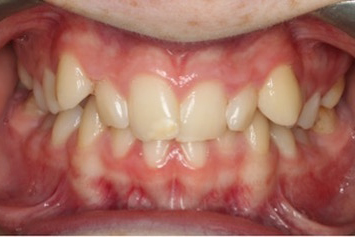
Severe Alignment Issues
This patient has severe tooth alignment issues and crowding. Often extractions (removal of teeth) in addition to braces are needed to align the teeth.
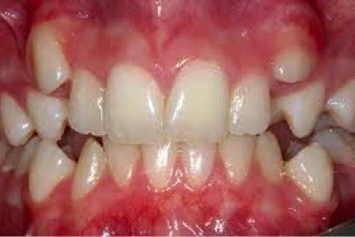
Spacing
This patient has excess space between his teeth. The space could easily be closed using traditional braces or Invisalign (removable, clear, plastic trays).
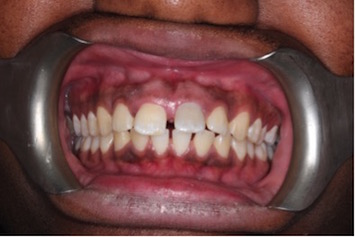
Spacing Due To Undersized And Misshaped Teeth
This patient has excess space between her front teeth. In part, the excess space is due to having undersized and misshaped teeth. Her upper front teeth are too small, especially the lateral incisors (teeth to the left and right of the two centermost teeth). Braces alone cannot close this excessive amount of space. In order for this patient to get an ideal result, she will need braces and the help of a restorative dentist (general dentist or prosthodontist) to place tooth-colored fillings, veneers, or crowns on her front teeth to help correct the underlying size and shape problems.
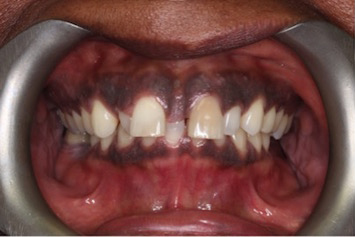
Midline Discrepancy
Sometimes the centers of the upper teeth do not align with the centers of the lower teeth. This can be due to crowding, missing teeth, bite shift, uneven jaw growth, or other reasons. Midline discrepancies are often difficult to correct and may require more than braces alone for full correction.
